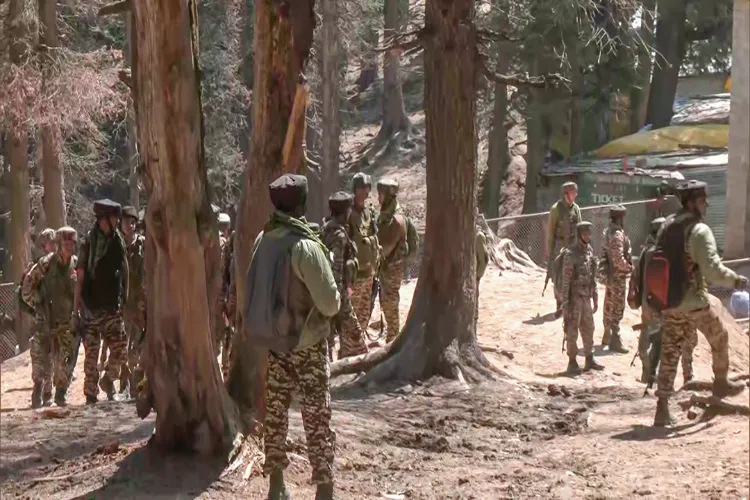
New Delhi
The Resistance Front (TRF) has emerged as a deceptive face of Pakistan-backed terrorism in Jammu and Kashmir. Born in the shadow of Article 370’s abrogation in 2019, the TRF was conceived by Pakistan’s intelligence agency ISI as a "local" facade for global jihadist networks — most notably, Lashkar-e-Taiba (LeT).
The outfit claimed responsibility for one of the deadliest attacks in recent years: the massacre in Baisaran Valley, Pahalgam. Over 26 civilians are dead, many seriously injured, and a nation once again finds itself grieving and furious. While the victims included tourists, the message was unmistakable — TRF targets not just the land, but the very spirit of Kashmir.
Behind TRF's shadowy digital banners stands Saifullah Khalid, also known as Saifullah Kasuri, LeT’s deputy chief and a close aide to Hafiz Saeed. Khalid, intelligence agencies sources say, is the chief strategist behind TRF's recent spate of attacks.
His influence within Pakistan’s security establishment is so entrenched that senior Pakistani military officers have publicly honoured him, even inviting him to address soldiers with jihadist rhetoric. “The more Indian soldiers you kill, the greater your reward from Allah,” he recently declared at a military gathering.
The TRF has mastered modern psychological warfare. On social media, it pushes propaganda and issues chilling threats, like the one following the Pahalgam attack: “More than 85,000 domiciles have been issued to non-locals… violence will be directed toward those attempting to settle illegally.”
Recognising the TRF’s growing footprint, the Indian government officially banned the organization in January 2023, declaring it a terrorist group under the Unlawful Activities (Prevention) Act or UAPA). The Ministry of Home Affairs called it "a proxy outfit of Lashkar-e-Taiba" involved in armed violence, targeted killings, online radicalisation and cross-border infiltration aided by the Pakistani military.
A digital-age terror machine
The TRF is unlike traditional terror outfits. It is agile, anonymous and digitally native. It recruits youth through online channels, trains them via camps like those in Abbottabad’s forests and deploys them in hit squads across the Valley. Its so-called “Hit Squad” and “Falcon Squad” are highly trained to carry out targeted assassinations and retreat into high-altitude hideouts.
The outfit launched a four-day assault near the Line of Control in Kupwara in April 2020, killing five Indian para commandos. In 2024, it executed a brutal attack in Ganderbal that killed a doctor and six migrant workers. And just days before the Pahalgam tragedy, TRF operatives were linked to fresh recruitment efforts across border regions.
TRF’s leadership, including Sajjad Gul, its operational commander, and Sajid Jatt and Salim Rehmani, have deep ties to LeT. Born in Srinagar and designated a terrorist by the Indian government in 2022, Gul is now seen as the architect of TRF’s ideological push and violent resurgence.
ALSO READ: Indian Muslims denounce brutal Pahalgam attack
Though banned, the TRF continues to operate openly on encrypted apps and social platforms, issuing threats, claiming attacks and trying to present its agenda as local resistance — when in truth, it is orchestrated from Rawalpindi’s war rooms.
The outfit has blurred the lines between militant and civilian targets. It has not only targeted security personnel but also Kashmiri Pandits, migrant workers and now, tourists.
